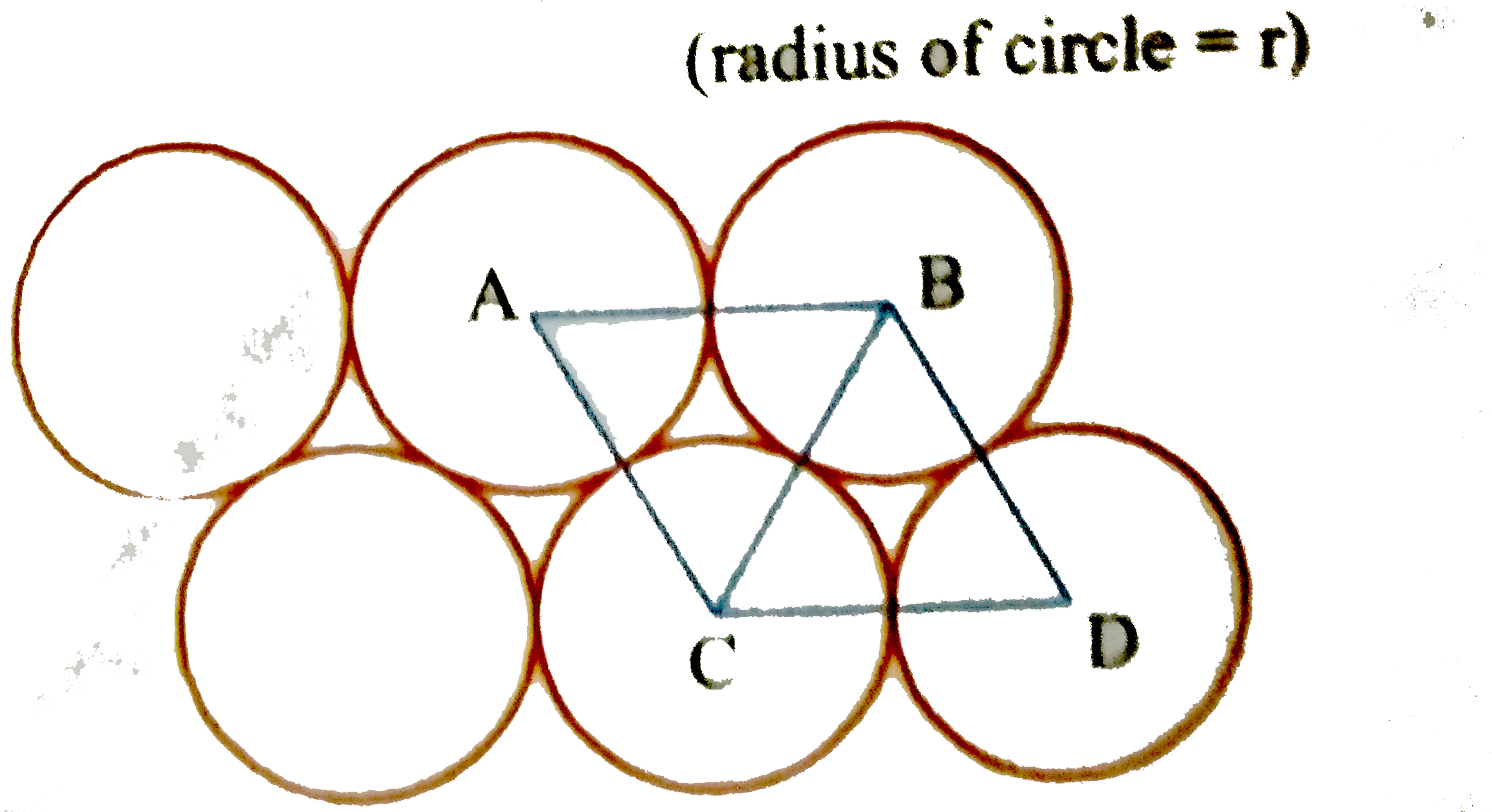Packing Fraction
To calculate the packing fraction for different crystal structures, we will follow a systematic approach. Let's break down the calculation for the Face-Centered Cubic (FCC), Body-Centered Cubic (BCC), and Simple Cubic structures step by step.
Step 1: Understanding Packing Fraction
The packing fraction (or packing efficiency) is defined as the volume occupied by the atoms in a unit cell divided by the total volume of the unit cell, expressed as a percentage.
Packing Fraction=(Volume occupied by atomsTotal volume of unit cell)×100
Step 2: Face-Centered Cubic (FCC) Structure
1. Determine the number of atoms (Z):
- Atoms at the corners contribute 18 each (8 corners).
- Atoms at the face centers contribute 12 each (6 faces).
- Total Z=8×18+6×12=1+3=4.
2. Calculate the volume occupied by atoms:
- Volume of one atom (sphere) = 43πr3.
- Total volume occupied by 4 atoms = 4×43πr3=163πr3.
3. Calculate the total volume of the unit cell:
- The edge length a is related to the radius r by a=2√2r.
- Total volume of the unit cell = a3=(2√2r)3=16√2r3.
4. Calculate the packing fraction:
Packing Fraction=⎛⎝163πr316√2r3⎞⎠×100=⎛⎝163π16√2⎞⎠×100
- Simplifying gives approximately 74%.
Step 3: Body-Centered Cubic (BCC) Structure
1. Determine the number of atoms (Z):
- Atoms at the corners contribute 18 each (8 corners).
- 1 atom at the center contributes 1.
- Total Z=8×18+1=2.
2. Calculate the volume occupied by atoms:
- Total volume occupied by 2 atoms = 2×43πr3=83πr3.
3. Calculate the total volume of the unit cell:
- The edge length a is related to the radius r by a=4r√3.
- Total volume of the unit cell = a3=(4r√3)3=64r33√3.
4. Calculate the packing fraction:
Packing Fraction=⎛⎜
⎜⎝83πr364r33√3⎞⎟
⎟⎠×100=(8π√364)×100
- This gives approximately 68%.
Step 4: Simple Cubic Structure
1. Determine the number of atoms (Z):
- Atoms at the corners contribute 18 each (8 corners).
- Total Z=8×18=1.
2. Calculate the volume occupied by atoms:
- Total volume occupied by 1 atom = 43πr3.
3. Calculate the total volume of the unit cell:
- The edge length a is related to the radius r by a=2r.
- Total volume of the unit cell = a3=(2r)3=8r3.
4. Calculate the packing fraction:
Packing Fraction=⎛⎝43πr38r3⎞⎠×100=⎛⎝43π8⎞⎠×100
- This gives approximately 52.4%.
Summary of Packing Fractions
- FCC: 74%
- BCC: 68%
- Simple Cubic: 52.4%
The packing fraction (or packing efficiency) is defined as the volume occupied by the atoms in a unit cell divided by the total volume of the unit cell, expressed as a percentage.
1. Determine the number of atoms (Z):
- Atoms at the corners contribute 18 each (8 corners).
- Atoms at the face centers contribute 12 each (6 faces).
- Total Z=8×18+6×12=1+3=4.
- Volume of one atom (sphere) = 43πr3.
- Total volume occupied by 4 atoms = 4×43πr3=163πr3.
- The edge length a is related to the radius r by a=2√2r.
- Total volume of the unit cell = a3=(2√2r)3=16√2r3.
Packing Fraction=⎛⎝163πr316√2r3⎞⎠×100=⎛⎝163π16√2⎞⎠×100
- Simplifying gives approximately 74%.
1. Determine the number of atoms (Z):
- Atoms at the corners contribute 18 each (8 corners).
- 1 atom at the center contributes 1.
- Total Z=8×18+1=2.
- Total volume occupied by 2 atoms = 2×43πr3=83πr3.
- The edge length a is related to the radius r by a=4r√3.
- Total volume of the unit cell = a3=(4r√3)3=64r33√3.
Packing Fraction=⎛⎜
⎜⎝83πr364r33√3⎞⎟
⎟⎠×100=(8π√364)×100
- This gives approximately 68%.
1. Determine the number of atoms (Z):
- Atoms at the corners contribute 18 each (8 corners).
- Total Z=8×18=1.
- Total volume occupied by 1 atom = 43πr3.
- The edge length a is related to the radius r by a=2r.
- Total volume of the unit cell = a3=(2r)3=8r3.
Packing Fraction=⎛⎝43πr38r3⎞⎠×100=⎛⎝43π8⎞⎠×100
- This gives approximately 52.4%.
- FCC: 74%
- BCC: 68%
- Simple Cubic: 52.4%
Similar Questions
3D Close Packing || Formation OF Triangular void after Placing First (A) Layer || Formation OF Tv and Ov after Placing Second (B) Layer, ABAB.... || type OF Packing - HCP (Z,CN) || Packing Fraction OF Unit Cell || Volume OF Atoms and unit Cell
View SolutionAgI crystallises in a cubic close-packed ZnS structure. What fraction of tetrahedral sites is occupied by Ag+ ions ?
View Solution
Knowledge Check
If M is the atomic mass and A is the mass number the packeing fraction is given by
AAM−ABA−MACMM−ADM−AAIf the unit cell of a mineral has cubic close packed (ccp) array of oxygen atoms with m fraction of octahedral holes occupied by aluminium ions and n fraction of tetrahedral holes occupied by magnesiums ions, m and n respectively, are
A12,18B1,14C12,12D14,18If the unit cell of a mineral has cubic close packed (ccp) array of oxygen atoms with m fraction of octahedral holes occupied by aluminium ions and n fraction of tetrahedral holes occupied by magnesiums ions, m and n respectively, are
A12,18B1,14C12,12D14,18
AgI crystallises in a cubic close-packed ZnS structure. What fraction of tetrahedral sites is occupied by Ag+ ions ?
View SolutionAgI crystallises in a cubic close-packed ZnS structure. What fraction of tetrahedral sites is occupied by Ag+ ions ?
View SolutionIf the unit cell of a mineral has cubic close packed (ccp) array of oxygen atoms with m fraction of octahedral holes occupied by aluminium ions and n fraction of tetrahedral holes occupied by magnesiums ions, m and n respectively, are
View SolutionA two dimensional lattice of closest packed identical circles , indicating a suitable unit cell is represent as follows then the fractional void area is

View SolutionIn a hexagonal close packed (hcp) structure of spheres, the fraction of the volume occupied by the sphere is A.In a cubic close packed structure, the fraction is B. The relation for A and B is
View Solution
